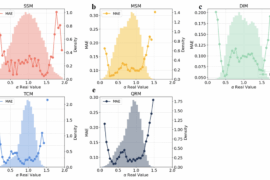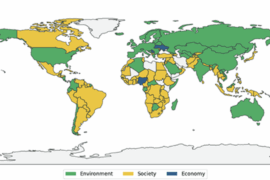The evolution of severe acute respiratory syndrome coronavirus 2 (SARS-CoV-2) in humans has been monitored at an unprecedented level due to the public health crisis, yet the stochastic dynamics underlying such a process is dubious. Here, considering the number of acquired mutations as the displacement of the viral particle from the origin, we performed biostatistical analyses from numerous whole genome sequences on the basis of a time-dependent probabilistic mathematical model. We showed that a model with a constant variant-dependent evolution rate and nonlinear mutational variance with time (i.e., anomalous diffusion) explained the SARS-CoV-2 evolutionary motion in humans during the first 120 wk of the pandemic in the United Kingdom. In particular, we found subdiffusion patterns for the Primal, Alpha, and Omicron variants but a weak superdiffusion pattern for the Delta variant. Our findings indicate that non-Brownian evolutionary motions occur in nature, thereby providing insight for viral phylodynamics.
L. Goiriz, R. Ruiz, Ò. Garibo-i-Orts, J.A. Conejero, G. Rodrigo. A variant-dependent molecular clock with anomalous diffusion models SARS-CoV-2 evolution in humans, Proc. Natl. Acad. Sci. U.S.A. 120 (30) e2303578120, https://doi.org/10.1073/pnas.2303578120 (2023).
See also this comment on our paper: S. Manrubia, J.A. Cuesta. Physics of diffusion in viral genome evolution, Proc. Natl. Acad. Sci. U.S.A. 120 (34) e2310999120, https://doi.org/10.1073/pnas.2310999120 (2023).





Comments are closed.